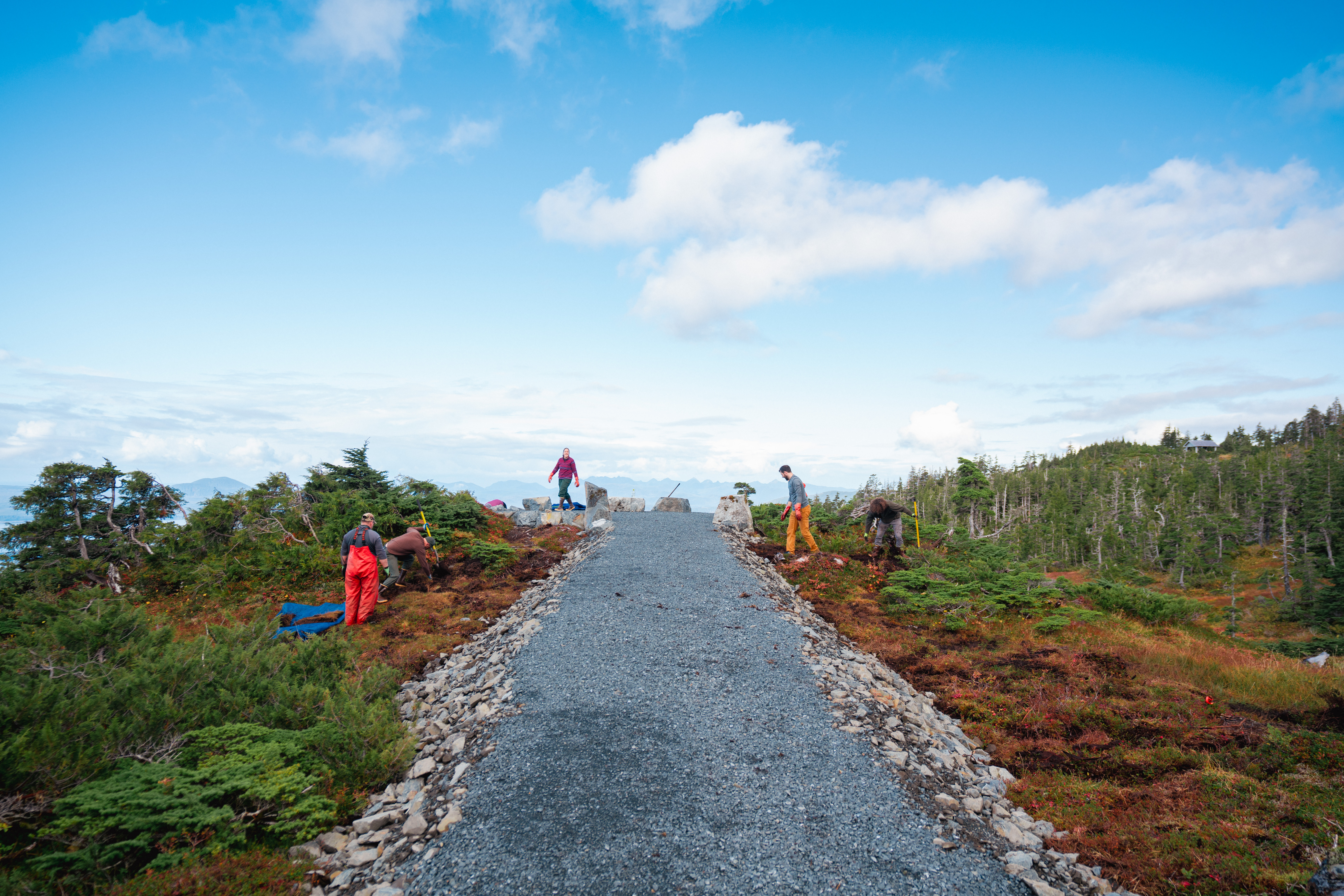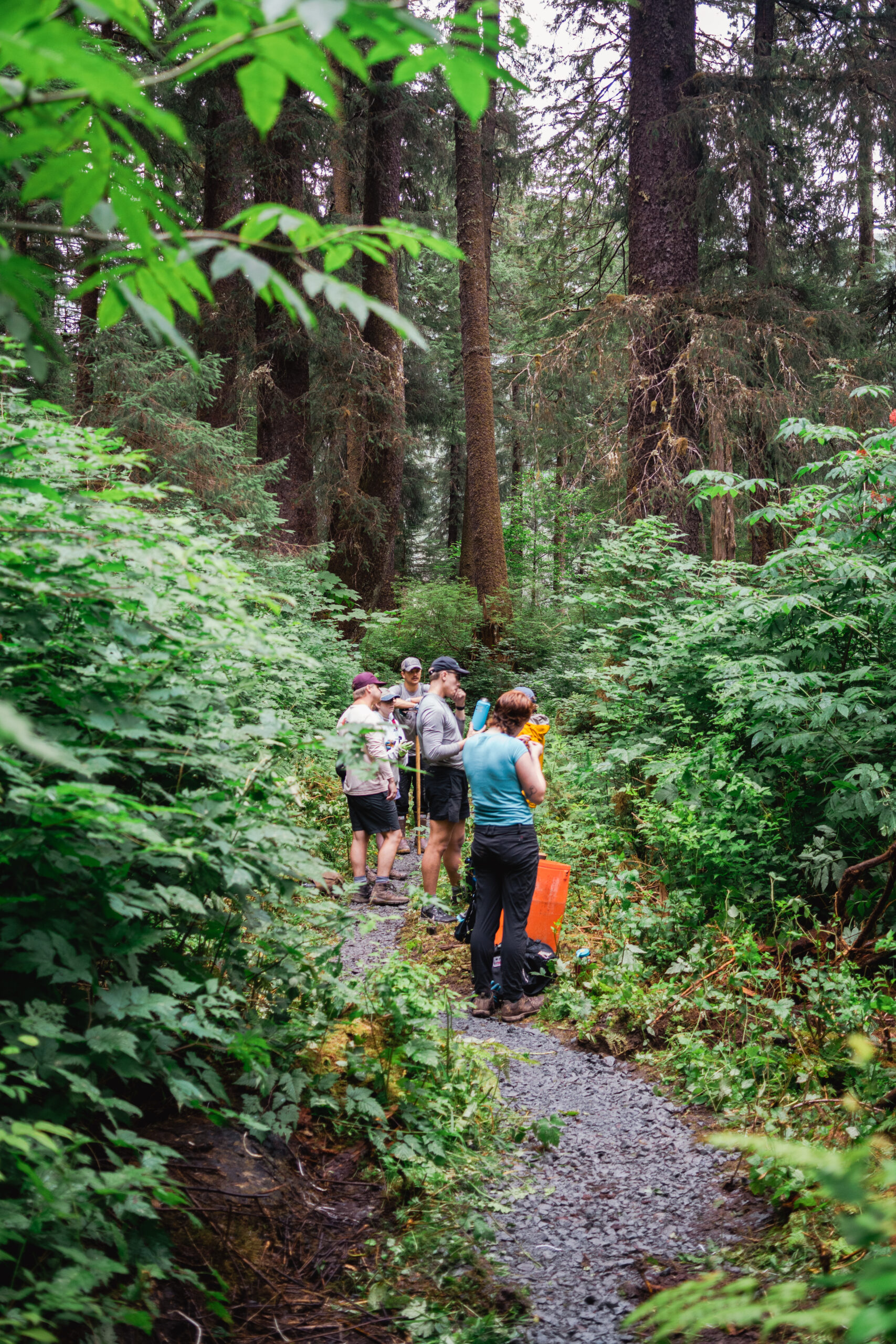Shaping the future of Sitka’s Trails
It’s time for a new vision.

A Trail Plan Built By and For Sitkans: Trail Plan 2023
Access to the amazing natural beauty that surrounds our community is a cornerstone of quality of life in Sitka. Being active outdoors keeps Sitkans healthy and happy, which is why it’s vital to maintain and improve public trails.
For the last twenty years, Sitka Trail Works has invested in the maintenance and expansion of our local trail network. The success of partnerships with public land managers including the City of Sitka, State Parks, the US Forest Service, Sitka Tribe of Alaska, and the National Park Service, is due in large part to 2003 Sitka Trail Plan. The original Trail Plan guided the construction of the Herring Cove Trail, the Thimbleberry to Heart Lake Trail, and the entire Cross Trail network. Many of the outdoor destinations that Sitkans cherish today exist thanks to that first Trail Plan.
It’s time for a new vision. Having accomplished many of the original objectives, Sitka Trail Works launched a new planning process in 2021. To start, Sitka Trail Works widely distributed a public survey to gather information about current uses, challenges, and opportunities for our trail system in the spring of 2022. Through the survey, an Open House, and meetings with various community groups, Sitkans shared hundreds of ideas for new trails and recreation facilities. Visit this page for more information and survey results.
With the support of an advisory committee of expert citizens and volunteers, Sitka Trail Works staff reviewed, mapped, and assessed the feasibility of every submitted idea over the course of the summer and fall 2022. The advisory Trail Plan Committee conducted a ranking process to prioritize the most beneficial projects among those that passed initial feasibility tests and produced a shorter list of potential trail projects. This draft list was distributed to the public for another round of review in winter 2022-2023. The final concepts underwent additional vetting in consultation with public land managers before being included in the final Trail Plan.
Projects were analyzed for community benefit according to the goals of this planning process:

Collectively agreeing on our priorities and advancing projects to shovel ready status helps Sitka compete for state and federal infrastructure funding. With this new plan guiding the way, we envision an even more robust trail system that supports the physical, mental, spiritual, and cultural vibrancy for future generations.
Our History: Read the Original 2003 Trail Plan
A few years after establishing Sitka Trail Works, the organization undertook a multi-jurisdictional planning process to determine the community priorities for trail development. The original Sitka Trail Plan was published in 2003 and guided efforts for twenty years.
To solidify the collaboration inherent in this trail plan that covered federal, state, and local lands, all partners signed an MOU stating they would take the lead on certain projects and work together in supporting all elements of the plan.
Having the US Forest Service, the National Park Service, Alaska State Parks, the City of Sitka and the Sitka Tribe of Alaska agree on a shared vision for how trails would connect through our public lands was front page news. Sitka Trail Works was instrumental in facilitating a holistic approach to planning and community engagement that was broader than any single agency could tackle alone.

Since that time, Sitka Trail Works and our partners have put in countless hours design, building, and restoring trails in the Sitka area with the support of many local volunteers and donors. Guided by the Plan, this coalition has developed many of the trails we love today:

